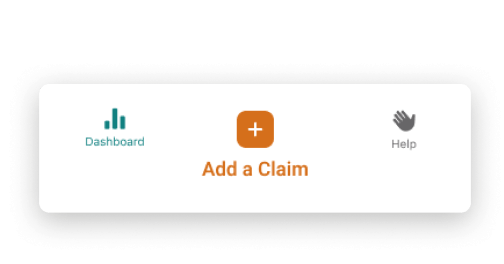Learning optometry billing can sometimes be tricky as it’s not really something you typically study for before you have to use it.
That being said, if you’re going to be billing on your own, then it’s important to take the time to learn what’s available.
So, in an attempt to try and help save you some time, we’ve put together an optometry cheat sheet that lists all of the fee codes available for eye exams.
Don’t forget to bookmark it, that way you can quickly reference it to make sure you’ve submitted the correct diagnosis and fee code. For a printable PDF scroll to the bottom.
Periodic Oculo-Visual Assessment
- V404 Assessment of the eye and vision system for patients 19 of age or less.
- V406 Assessment of the eye and vision system for patients 65 of age or more.
Limited to one per patient per 12 consecutive months.
Major Eye Examination Optometry OHIP Billing Codes
V409 Assessment of the eye and vision system for patients between age 20-64.
- Requirements: valid requisition from a physician or a registered nurse and one of the following conditions: Diabetes Mellitus
Glaucoma
Cataract
Retinal Disease
Amblyopia
Visual Field Defects
Corneal Disease
Strabismus
Recurrent Uveitis
Optic Pathway Disease
Major Eye Examination includes:
- Relevant history
- Visual acuity examination
- Ocular motility examination
- Refraction and written refractive prescription if required.
- Slit lamp examination of the anterior segment.
- Ophthalmoscopy by one or more direct binocular indirect ophthalmoscope, monocular indirect ophthalmoscope or no contact fundus lens.
- Advice /instruction to the patient.
- Letter outlining the findings of examination.
- Tonometry
- Visual field examination by confrontation field.
- Dilated fundus examination by one or more direct binocular indirect ophthalmoscope, monocular indirect ophthalmoscope or no contact fundus lens.
Oculo-visual Minor Assessment
V402 for patient aged 19 or less or age 64 or more.
V408 for patient aged 20 to 64.
- Assessment of the eye and vision system clinically required for the purpose of assessing or reassessing a single ocular condition.
- History or presenting complaint.
- Advice/instruction to the patient.
V409 must have been rendered within a 12 month period preceding the date of the oculo-visual minor assessment.
Automated Visual Fields Assessment
V410 Assessment of the eye and vision system for the purpose of mapping patient’s visual fields.
- Patients age 19 or less or 64 or older, the service is insured when the automated visual field assessment is clinically necessary to determine the extent and sensitivity or the patient’s visual fields.
- Patients age 20-64 the service in insured when following a major eye examination (V409) or a minor assessment (V408).
MSCC Program
MSCC Ontario Disability Support Program (ODSP).
V450 Periodic oculo-visual assessment rendered to patients of ages 20-64 who are recipients of income support under the Ontario Disability Support Program Act.
MCSS Ontario Works Program (OW)
V451 Periodic oculo-visual assessment rendered to patients between ages 20-64 who are recipients of income assistance or benefits under the Ontario Works Act.
Optometry OHIP Diagnostic Codes
| Diagnostic | Code |
|---|---|
| Aphakia | 360 |
| Retinal Detachment | 361 |
| Hypertensive Retinopathy | 362 |
| Chorioretinitis | 363 |
| Iritis | 364 |
| Glaucoma | 365 |
| Cataract, excludes diabetic or congenital | 366 |
| Myophia astigmatism | 367 |
| Amblyopia, Visual field defects | 368 |
| Blindness and low vision | 369 |
| Keratitis, corneal ulcer | 370 |
| High Myopia greater than 9 diopters | 371 |
| Conjunctiva disorders | 372 |
| Blepharitis, chalazion, style | 373 |
| Other eyelid disorders | 374 |
| Dacryocystitis, Obstruction of lacrimal duct | 375 |
| Keratoconus | 376 |
| Optic Neuritis | 377 |
| Strabismus | 378 |
| Other disorders of the eye | 379 |
Optometry OHIP Billing Tips to Avoid Submission Errors
If you get a submission error then your claim didn’t pass OHIP’s pre-edit approval process.
This isn’t a big deal, it just means you’ve made a mistake when submitting your claim and didn’t follow one of the rules outlined above.
While this will delay your payment, submission errors are usually easy to fix. For example, most optometry errors are a direct result of:
- A fee code conflict – so assessment is required (For example your diagnostic code doesn’t match your billing code).
- Your Patient doesn’t have insurance.
Always check those two things before submitting a claim to OHIP.
If you do get a submission error it will be outlined in your Claim Error Report using a specific code. This code will explain what rule you violated.
How to Avoid Rejections
Rejections in Optometry OHIP Billing are usually caused by errors in follow up visits. For example, if you see a patient who is covered under OHIP and they have a follow-up visit, that follow-up visit is only billable if it’s claimed with the same diagnostic as in the original exam.
If the follow-up is billed with a different diagnostic your claim will be rejected.
Additionally, make sure the follow-up is billed on a different date of service than the full exam was.
When a claim does get rejected, or is reduced, you can resubmit the claim and inquire to appeal the decision. To inquire about your rejected claims you need to fill out the Remittance Advice Inquiry form.
This needs to be done within four months from the issue date of the RA report (that detailed the claim in question).
Keep in mind that claims have to be submitted within six months of the original date of service. Anything submitted after six months will be rejected and become ‘stale dated‘ claims.
If you’re interested in other OHIP fee codes, make sure to save a link to our OHIP searchable database below. You can search by speciality, billing code or keyword.
OHIP billing codes Searchable Database
Final Takeaway:
Remember you have the option of ” starring” your most commonly used billing codes. Using this feature will help save you time as your most commonly used billing codes will appear at the top of your lists so you can find them easier.

Contact us if you have any questions regarding Optometry OHIP Billing Codes.
Looking to maximize your billing?
Check out The Ultimate OHIP Billing Guide for more tips, tricks and automated features!
This article offers general information only and is not intended as legal, financial or other professional advice. A professional advisor should be consulted regarding your specific situation. While information presented is believed to be factual and current, its accuracy is not guaranteed and it should not be regarded as a complete analysis of the subjects discussed. All expressions of opinion reflect the judgment of the author(s) as of the date of publication and are subject to change. No endorsement of any third parties or their advice, opinions, information, products or services is expressly given or implied by RBC Ventures Inc. or its affiliates.

Add Claims in Seconds
Our software helps you save time, collaborate with ease and get expert support.






